|
Agglomerate Particles
This is part of a guide to the identification of particles seen in samples of
free particles. This specific file shows examples of agglomerates.
Agglomerates are particle clusters that indicate specific activities or
conditions. Agglomerates are
very fragile and can only be recognized in tapelifts where the spatial
distribution of the particles
is retained during the sampling process.
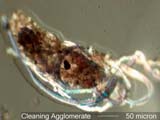
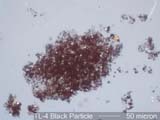
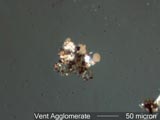

Cleaning agglomerates are particle clusters that indicate specific cleaning
activities. These include
dusting, damp wiping, carpet cleaning, floor striping, floor scrubbing, spray
cleaners, etc. Each
process is accompanied by its own characteristic agglomerate. Damp wiping
results in a cluster of
particles often associated with fibers from the wiping cloth. Sponge wiping
results in circular
collections of particles formed by the surface tension of residual droplets of
water left behind.
Dry wiping leaves particles aligned in the direction of the wipe with all larger
particles being absent.
Carpet cleaning creates a liquid aerosol of cleaning solution and particles. The
liquid evaporates, which
leaves little spheres of fine particles bound with the residual cleaning agent.
These spheres include
mixtures of fine natural minerals, shoe wear, carpet wear, humus, pollen,
spores, insect parts, starch,
and other common household, office, or classroom debris. Similar spheres are
created by floor stripping
and floor scrubbing but the agglomerate contains more isotropic material from
the floor coating. The
aerosol agglomerates are typically less than 50 micrometers in diameter. Spray
cleaners are products
that are sprayed onto surfaces and the surface is wiped. The spray creates small
liquid droplets
that may float to adjacent surfaces that are not being cleaned. These droplets
leave small circular
deposits of the cleaning agent.

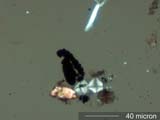
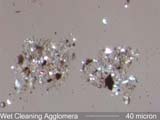
HVAC agglomerates are particle clusters that are formed in the HVAC sytem. There
are two basic sources
for these particles. One is the filter medium where the particles are
agglomerated on the surface of the
filter. These particles are knocked loose during filter change-out or if a hole
is created in the filter.
The other source is the slow accumulation of particles on the wall of the HVAC
duct. These particles start
typically as diffusional deposits. As they first accumulate on the wall they
create an isolated stactic
charge. This attracts more particles and the agglomerate begins to grow. It
continues to grow until its
mass is sufficient that vibration in the duct jars the agglomerate free and it
becomes part of the air
stream. These agglomerates are generally dominated by soot particles and are
quite dark in appearance.
At times they may be dominated by a local activity, such as remodeling, and take
on a different
appearance. Agglomerates That form in the recycle loop of the HVAC system will
include skin flakes and
typical indoor particles rather than the pollens, fine minerals, insect parts,
tire wear, etc. associated
with the fresh air supply duct.
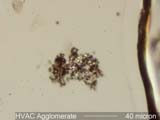

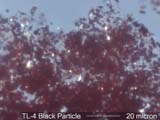

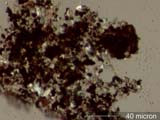
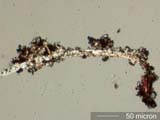
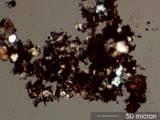
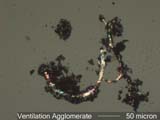
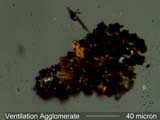
Remodeling agglomerates are particle clusters that indicate remodeling
activities. These particles
may agglomerate during a cleaning activity or they may agglomerate in the HVAC
system. Their
characteristic property is that they consist of particles like plaster, paint
spheres, glass fiber,
sawdust, and other particles associated with the remodeling activity. These
particles may be
associated with health complaints.
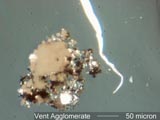

Wet road agglomerates are particle clusters that include tire wear, road debris,
pollens, and other
particles commonly found on the surface of roads. The road debris may be from
asphalt or cement roads.
These particles are the road spray residues formed when the road is wet and the
normal road debris is
agglomerated rather than free floating.


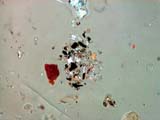
|